Coating-Based Quartz Crystal Microbalance Detection Methods of Environmentally Relevant Volatile Organic Compounds
Abstract
:1. Introduction
2. Quartz Crystal Microbalance Devices: Gravimetric and Non-Gravimetric Sensing
3. Commonly Employed Coating Materials for QCM-Based Sensors
3.1. Polymer-Based Coating Materials
Carbon-Based Coating Materials
3.2. Ionic Liquids (ILs)
3.2.1. Target-Specific IL Sensors
3.2.2. IL Sensor Arrays
3.3. Macrocyclic Sensors
3.3.1. Calixarenes
3.3.2. Phthalocyanines Sensors
3.3.3. Phthalocyanines Sensors
4. Electronic Devices
4.1. General QCR Signal Output through QCM Devices
4.2. Impedance-Based Measurement System
4.3. QCM with Dissipation Monitoring (QCM-D)
4.4. Oscillator-Based Measurement System
5. Conclusions
Author Contributions
Funding
Institutional Review Board Statement
Informed Consent Statement
Data Availability Statement
Conflicts of Interest
References
- EPA. What Is the Definition of VOC? Available online: https://www.epa.gov/air-emissions-inventories/what-definition-voc (accessed on 1 May 2021).
- EPA. Technical Overview of Volatile Organic Compounds. Available online: https://www.epa.gov/indoor-air-quality-iaq/technical-overview-volatile-organic-compounds#definition (accessed on 1 May 2021).
- Owen, S.M.; Clark, S.; Pompe, M.; Semple, K.T. Biogenic volatile organic compounds as potential carbon sources for microbial communities in soil from the rhizosphere of Populus tremula. FEMS Microbiol. Lett. 2007, 268, 34–39. [Google Scholar] [CrossRef] [Green Version]
- Maleknia, S.D.; Bell, T.L.; Adams, M.A. Eucalypt smoke and wildfires: Temperature dependent emissions of biogenic volatile organic compounds. Int. J. Mass Spectrom. 2009, 279, 126–133. [Google Scholar] [CrossRef]
- Aaltonen, H.; Aalto, J.; Kolari, P.; Pihlatie, M.; Pumpanen, J.; Kulmala, M.; Nikinmaa, E.; Vesala, T.; Bäck, J. Continuous VOC flux measurements on boreal forest floor. Plant Soil 2013, 369, 241–256. [Google Scholar] [CrossRef]
- Kesselmeier, J.; Kuhn, U.; Wolf, A.; Andreae, M.O.; Ciccioli, P.; Brancaleoni, E.; Frattoni, M.; Guenther, A.; Greenberg, J.; De Castro Vasconcellos, P.; et al. Atmospheric volatile organic compounds (VOC) at a remote tropical forest site in central Amazonia. Atmos. Environ. 2000, 34, 4063–4072. [Google Scholar] [CrossRef] [Green Version]
- Qin, Y.; Walk, T.; Gary, R.; Yao, X.; Elles, S. C2–C10 nonmethane hydrocarbons measured in Dallas, USA—Seasonal trends and diurnal characteristics. Atmos. Environ. 2007, 41, 6018–6032. [Google Scholar] [CrossRef]
- Hou, X.; Strickland, M.J.; Liao, K.-J. Contributions of regional air pollutant emissions to ozone and fine particulate matter-related mortalities in eastern U.S. urban areas. Environ. Res. 2015, 137, 475–484. [Google Scholar] [CrossRef] [PubMed]
- Wei, W.; Lv, Z.; Yang, G.; Cheng, S.; Li, Y.; Wang, L. VOCs emission rate estimate for complicated industrial area source using an inverse-dispersion calculation method: A case study on a petroleum refinery in Northern China. Environ. Pollut. 2016, 218, 681–688. [Google Scholar] [CrossRef]
- Hardoyono, F.; Windhani, K.; Sambodo, H.; Pudjianto, H. Identification of Bioactive Compounds in Ginger Based on Molecularly Imprinted Polymer Quartz Crystal Microbalance Gas Sensor. IOP Conf. Ser. Mater. Sci. Eng. 2019, 546, 032012. [Google Scholar] [CrossRef]
- Majchrzak, T.; Wojnowski, W.; Dymerski, T.; Gębicki, J.; Namieśnik, J. Electronic noses in classification and quality control of edible oils: A review. Food Chem. 2018, 246, 192–201. [Google Scholar] [CrossRef]
- Wen, T.; Sang, M.; Wang, M.; Han, L.; Gong, Z.; Tang, X.; Long, X.; Xiong, H.; Peng, H. Rapid detection of d-limonene emanating from citrus infestation by Bactrocera dorsalis (Hendel) using a developed gas-sensing system based on QCM sensors coated with ethyl cellulose. Sens. Actuators B Chem. 2021, 328, 129048. [Google Scholar] [CrossRef]
- Bwambok, D.K.; Siraj, N.; Macchi, S.; Larm, N.E.; Baker, G.A.; Pérez, R.L.; Ayala, C.E.; Walgama, C.; Pollard, D.; Rodriguez, J.D. QCM Sensor Arrays, Electroanalytical Techniques and NIR Spectroscopy Coupled to Multivariate Analysis for Quality Assessment of Food Products, Raw Materials, Ingredients and Foodborne Pathogen Detection: Challenges and Breakthroughs. Sensors 2020, 20, 6982. [Google Scholar] [CrossRef] [PubMed]
- Amann, A.; Costello, B.d.L.; Miekisch, W.; Schubert, J.; Buszewski, B.; Pleil, J.; Ratcliffe, N.; Risby, T. The human volatilome: Volatile organic compounds (VOCs) in exhaled breath, skin emanations, urine, feces and saliva. J. Breath Res. 2014, 8, 034001. [Google Scholar] [CrossRef]
- Güntner, A.T.; Abegg, S.; Königstein, K.; Gerber, P.A.; Schmidt-Trucksäss, A.; Pratsinis, S.E. Breath Sensors for Health Monitoring. ACS Sens. 2019, 4, 268–280. [Google Scholar] [CrossRef] [PubMed]
- Sánchez, C.; Santos, J.P.; Lozano, J. Use of electronic noses for diagnosis of digestive and respiratory diseases through the breath. Biosensors 2019, 9, 35. [Google Scholar] [CrossRef] [PubMed] [Green Version]
- Sola Martínez, R.A.; Pastor Hernández, J.M.; Yanes Torrado, Ó.; Cánovas Díaz, M.; de Diego Puente, T.; Vinaixa Crevillent, M. Exhaled volatile organic compounds analysis in clinical pediatrics: A systematic review. Pediatri. Res. 2020. [Google Scholar] [CrossRef] [PubMed]
- Janfaza, S.; Nojavani, M.B.; Nikkhah, M.; Alizadeh, T.; Esfandiar, A.; Ganjali, M.R. A selective chemiresistive sensor for the cancer-related volatile organic compound hexanal by using molecularly imprinted polymers and multiwalled carbon nanotubes. Microchim. Acta 2019, 186, 137. [Google Scholar] [CrossRef] [PubMed]
- Zhao, S.; Lei, J.; Huo, D.; Hou, C.; Luo, X.; Wu, H.; Fa, H.; Yang, M. A colorimetric detector for lung cancer related volatile organic compounds based on cross-response mechanism. Sens. Actuators B Chem. 2018, 256, 543–552. [Google Scholar] [CrossRef]
- Janssens, E.; van Meerbeeck, J.P.; Lamote, K. Volatile organic compounds in human matrices as lung cancer biomarkers: A systematic review. Crit. Rev. Oncol. Hematol. 2020, 153, 103037. [Google Scholar] [CrossRef]
- Wang, L.; Wu, Y.; Li, G.; Xu, H.; Gao, J.; Zhang, Q. Superhydrophobic n-octadecylsiloxane (PODS)-functionalized PDA-PEI film as efficient water-resistant sensor for ppb-level hexanal detection. Chem. Eng. J. 2020, 399, 125755. [Google Scholar] [CrossRef]
- Behera, B.; Joshi, R.; Vishnu, G.A.; Bhalerao, S.; Pandya, H.J. Electronic nose: A non-invasive technology for breath analysis of diabetes and lung cancer patients. J. Breath Res. 2019, 13, 024001. [Google Scholar] [CrossRef]
- Saidi, T.; Zaim, O.; Moufid, M.; El Bari, N.; Ionescu, R.; Bouchikhi, B. Exhaled breath analysis using electronic nose and gas chromatography–mass spectrometry for non-invasive diagnosis of chronic kidney disease, diabetes mellitus and healthy subjects. Sens. Actuators B Chem. 2018, 257, 178–188. [Google Scholar] [CrossRef]
- Dragonieri, S.; Scioscia, G.; Quaranta, V.N.; Carratu, P.; Venuti, M.P.; Falcone, M.; Carpagnano, G.E.; Barbaro, M.P.F.; Resta, O.; Lacedonia, D. Exhaled volatile organic compounds analysis by e-nose can detect idiopathic pulmonary fibrosis. J. Breath Res. 2020, 14, 047101. [Google Scholar] [CrossRef] [PubMed]
- Sarno, R.; Sabilla, S.I.; Wijaya, D.R. Electronic Nose for Detecting Multilevel Diabetes Using Optimized Deep Neural Network. Eng. Lett. 2020, 28, 31–42. [Google Scholar]
- Van Keulen, K.E.; Jansen, M.E.; Schrauwen, R.W.; Kolkman, J.J.; Siersema, P.D. Volatile organic compounds in breath can serve as a non-invasive diagnostic biomarker for the detection of advanced adenomas and colorectal cancer. Aliment. Pharmacol. Ther. 2020, 51, 334–346. [Google Scholar] [CrossRef] [Green Version]
- Ramírez, N.; Cuadras, A.; Rovira, E.; Borrull, F.; Marcé, R.M. Comparative study of solvent extraction and thermal desorption methods for determining a wide range of volatile organic compounds in ambient air. Talanta 2010, 82, 719–727. [Google Scholar] [CrossRef]
- Samide, M.J.; Smith, G.D. Analysis and quantitation of volatile organic compounds emitted from plastics used in museum construction by evolved gas analysis–gas chromatography–mass spectrometry. J. Chromatogr. A 2015, 1426, 201–208. [Google Scholar] [CrossRef]
- Nikolaou, A.D.; Golfinopoulos, S.K.; Kostopoulou, M.N.; Kolokythas, G.A.; Lekkas, T.D. Determination of volatile organic compounds in surface waters and treated wastewater in Greece. Water Res. 2002, 36, 2883–2890. [Google Scholar] [CrossRef]
- Faiola, C.L.; Erickson, M.H.; Fricaud, V.L.; Jobson, B.T.; VanReken, T.M. Quantification of biogenic volatile organic compounds with a flame ionization detector using the effective carbon number concept. Atmos. Meas. Tech. 2012, 5, 1911–1923. [Google Scholar] [CrossRef] [Green Version]
- Jia, M.; Koziel, J.; Pawliszyn, J. Fast field sampling/sample preparation and quantification of volatile organic compounds in indoor air by solid-phase microextraction and portable gas chromatography. Field Anal. Chem. Technol. 2000, 4, 73–84. [Google Scholar] [CrossRef]
- Liu, H.-W.; Liu, Y.-T.; Wu, B.-Z.; Nian, H.-C.; Chen, H.-J.; Chiu, K.-H.; Lo, J.-G. Process sampling module coupled with purge and trap–GC–FID for in situ auto-monitoring of volatile organic compounds in wastewater. Talanta 2009, 80, 903–908. [Google Scholar] [CrossRef] [PubMed]
- Park, C.; Schade, G.W.; Boedeker, I. Flux measurements of volatile organic compounds by the relaxed eddy accumulation method combined with a GC-FID system in urban Houston, Texas. Atmos. Environ. 2010, 44, 2605–2614. [Google Scholar] [CrossRef]
- Michalczuk, B.; Moravský, L.; Hrdá, J.; Matejčík, Š. Atmospheric Pressure Chemical Ionisation study of selected Volatile Organic Compounds (VOCs) by Ion Mobility Spectrometry coupled with orthogonal acceleration Time of Flight Mass Spectrometry. Int. J. Mass Spectrom. 2020, 449, 116275. [Google Scholar] [CrossRef]
- Moura, P.C.; Vassilenko, V.; Fernandes, J.M.; Santos, P.H. Indoor and Outdoor Air Profiling with GC-IMS. In Doctoral Conference on Computing, Electrical and Industrial Systems; Springer: Cham, Switzerland, 2020; pp. 437–444. [Google Scholar]
- Xue, B.; Sun, L.; Huang, Z.; Gao, W.; Fan, R.; Cheng, P.; Ding, L.; Ma, L.; Zhou, Z. A hand-portable digital linear ion trap mass spectrometer. Analyst 2016, 141, 5535–5542. [Google Scholar] [CrossRef]
- La Nasa, J.; Lomonaco, T.; Manco, E.; Ceccarini, A.; Fuoco, R.; Corti, A.; Modugno, F.; Castelvetro, V.; Degano, I. Plastic breeze: Volatile organic compounds (VOCs) emitted by degrading macro- and microplastics analyzed by selected ion flow-tube mass spectrometry. Chemosphere 2020, 128612. [Google Scholar] [CrossRef]
- Lin, W.; Li, Z. Detection and quantification of trace organic contaminants in water using the FT-IR-attenuated total reflectance technique. Anal. Chem. 2010, 82, 505–515. [Google Scholar] [CrossRef] [PubMed]
- Pogodina, O.A.; Pustogov, V.V.; De Melas, F.; Haberhauer-Troyer, C.; Rosenberg, E.; Puxbaum, H.; Inberg, A.; Croitoru, N.; Mizaikoff, B. Combination of sorption tube sampling and thermal desorption with hollow waveguide FT-IR spectroscopy for atmospheric trace gas analysis: Determination of atmospheric ethene at the lower ppb level. Anal. Chem. 2004, 76, 464–468. [Google Scholar] [CrossRef] [PubMed]
- Marks, A. The Human Nose Knows More Than We Think. 2017. Available online: https://www.scientificamerican.com/article/the-human-nose-knows-more-than-we-think/ (accessed on 1 May 2021).
- Williams, S.C.P. Human nose can detect a trillion smells. Science 2014, 372, 3–20. [Google Scholar]
- Gardner, J.W.; Bartlett, P.N. Electronic Noses: Principles and Applications; Oxford University Press: Oxford, UK, 1999. [Google Scholar]
- Persaud, K.; Dodd, G. Analysis of discrimination mechanisms in the mammalian olfactory system using a model nose. Nature 1982, 299, 352–355. [Google Scholar] [CrossRef] [PubMed]
- Matatagui, D.; Kolokoltsev, O.V.; Qureshi, N.; Mejía-Uriarte, E.V.; Ordoñez-Romero, C.L.; Vázquez-Olmos, A.; Saniger, J.M. Magnonic sensor array based on magnetic nanoparticles to detect, discriminate and classify toxic gases. Sens. Actuators B Chem. 2017, 240, 497–502. [Google Scholar] [CrossRef]
- Song, Z.; Tang, Q.; Tong, Y.; Liu, Y. High-Response Identifiable Gas Sensor Based on a Gas-Dielectric ZnPc Nanobelt FET. IEEE Electron Device Lett. 2017, 38, 1586–1589. [Google Scholar] [CrossRef]
- Moon, H.G.; Han, S.D.; Kang, M.-G.; Jung, W.-S.; Jang, H.W.; Yoo, K.S.; Park, H.-H.; Kang, C.Y. Chemiresistive sensor array based on semiconducting metal oxides for environmental monitoring. J. Sens. Sci. Technol. 2014, 23, 15–18. [Google Scholar] [CrossRef] [Green Version]
- Righettoni, M.; Amann, A.; Pratsinis, S.E. Breath analysis by nanostructured metal oxides as chemo-resistive gas sensors. Mater. Today 2015, 18, 163–171. [Google Scholar] [CrossRef]
- Horsfall, L.A.; Pugh, D.C.; Blackman, C.S.; Parkin, I.P. An array of WO 3 and CTO heterojunction semiconducting metal oxide gas sensors used as a tool for explosive detection. J. Mater. Chem. A 2017, 5, 2172–2179. [Google Scholar] [CrossRef]
- Mascini, M.; Gaggiotti, S.; Della Pelle, F.; Di Natale, C.; Qakala, S.; Iwuoha, E.; Pittia, P.; Compagnone, D. Peptide modified ZnO nanoparticles as gas sensors array for volatile organic compounds (VOCs). Front. Chem. 2018, 6, 105. [Google Scholar] [CrossRef] [Green Version]
- Gao, F.; Xuan, W.; Bermak, A.; Boussaid, F.; Tsui, C.-Y.; Luo, J. Dual transduction on a single sensor for gas identification. Sens. Actuators B Chem. 2019, 278, 21–27. [Google Scholar] [CrossRef]
- Harun, F.K.C.; Jumadi, A.M.; Mahmood, N.H. Carbon black polymer composite gas sensor for electronic nose. Methods 2011, 6. [Google Scholar]
- Esteves, C.H.A.; Iglesias, B.A.; Li, R.W.C.; Ogawa, T.; Araki, K.; Gruber, J. New composite porphyrin-conductive polymer gas sensors for application in electronic noses. Sens. Actuators B Chem. 2014, 193, 136–141. [Google Scholar] [CrossRef]
- Benvenho, A.R.; Li, R.W.; Gruber, J. Polymeric electronic gas sensor for determining alcohol content in automotive fuels. Sens. Actuators B Chem. 2009, 136, 173–176. [Google Scholar] [CrossRef]
- Chang, J.B.; Liu, V.; Subramanian, V.; Sivula, K.; Luscombe, C.; Murphy, A.; Liu, J.; Fréchet, J.M. Printable polythiophene gas sensor array for low-cost electronic noses. J. Appl. Phys. 2006, 100, 014506. [Google Scholar] [CrossRef]
- Gebicki, J. Application of electrochemical sensors and sensor matrixes for measurement of odorous chemical compounds. TrAC Trends Anal. Chem. 2016, 77, 1–13. [Google Scholar] [CrossRef]
- Jasinski, G.; Kalinowski, P.; Wozniak, L.; Koscinski, P.; Jasinski, P. An electronic nose based on the semiconducting and electrochemical gas sensors. In Proceedings of the 2017 21st European Microelectronics and Packaging Conference (EMPC) & Exhibition, Warsaw, Poland, 10–13 September 2017; pp. 1–4. [Google Scholar]
- Lin, H.; Jang, M.; Suslick, K.S. Preoxidation for Colorimetric Sensor Array Detection of VOCs. J. Am. Chem. Soc. 2011, 133, 16786–16789. [Google Scholar] [CrossRef] [Green Version]
- Pádua, A.C.; Palma, S.; Gruber, J.; Gamboa, H.; Roque, A.C. Design and evolution of an opto-electronic device for vocs detection. Biomed. Eng. Syst. Technol. Int. Jt. Conf. BIOSTEC Revis. Sel. Pap. 2018, 1, 48–55. [Google Scholar] [PubMed]
- Kladsomboon, S.; Lutz, M.; Pogfay, T.; Puntheeranurak, T.; Kerdcharoen, T. Hybrid optical-electrochemical electronic nose system based on Zn-porphyrin and multi-walled carbon nanotube composite. J. Nanosci. Nanotechnol. 2012, 12, 5240–5244. [Google Scholar] [CrossRef] [PubMed]
- Thepudom, T.; Kladsomboon, S.; Pogfay, T.; Tuantranont, A.; Kerdcharoen, T. Portable optical-based electronic nose using dual-sensors array applied for volatile discrimination. In Proceedings of the 2012 9th International Conference on Electrical Engineering/Electronics, Computer, Telecommunications and Information Technology, Phetchaburi, Thailand, 16–18 May 2012; pp. 1–4. [Google Scholar]
- Wang, D.; Wang, L.; Yu, J.; Wang, P.; Hu, Y.; Ying, K. Characterization of a modified surface acoustic wave sensor used in electronic nose for potential application in breath diagnosis. Sens. Lett. 2011, 9, 884–889. [Google Scholar] [CrossRef]
- Zhao, Y.; Yang, Q.; Chang, Y.; Qu, H.; Pang, W.; Zhang, H.; Duan, X. Detection and discrimination of volatile organic compounds using a single multi-resonance mode piezotransduced silicon bulk acoustic wave resonator (PSBAR) as virtual sensor array. Sens. Actuators B Chem. 2018, 254, 1191–1199. [Google Scholar] [CrossRef]
- Wong, Y.C.; Ang, B.C.; Haseeb, A.; Baharuddin, A.A.; Wong, Y.H. Conducting polymers as chemiresistive gas sensing materials: A review. J. Electrochem. Soc. 2019, 167, 037503. [Google Scholar] [CrossRef]
- Fanget, S.; Hentz, S.; Puget, P.; Arcamone, J.; Matheron, M.; Colinet, E.; Andreucci, P.; Duraffourg, L.; Myers, E.; Roukes, M. Gas sensors based on gravimetric detection—A review. Sens. Actuators B Chem. 2011, 160, 804–821. [Google Scholar] [CrossRef]
- Ni, Y.; Kumagai, K.; Yanagisawa, Y. Measuring emissions of organophosphate flame retardants using a passive flux sampler. Atmos. Environ. 2007, 41, 3235–3240. [Google Scholar] [CrossRef]
- Salthammer, T.; Fuhrmann, F.; Uhde, E. Flame retardants in the indoor environment—Part II: Release of VOCs (triethylphosphate and halogenated degradation products) from polyurethane. Indoor Air 2003, 13, 49–52. [Google Scholar] [CrossRef]
- Solbu, K.; Daae, H.L.; Olsen, R.; Thorud, S.; Ellingsen, D.G.; Lindgren, T.; Bakke, B.; Lundanes, E.; Molander, P. Organophosphates in aircraft cabin and cockpit air—method development and measurements of contaminants. J. Environ. Monit. 2011, 13, 1393–1403. [Google Scholar] [CrossRef] [PubMed]
- Duberg, D. Identification of Volatile Organic Compounds (VOC) and Organophosphate Flame Retardants (OPFR) in Building Materials; Örebro University: Örebro, Sweden, 2017. [Google Scholar]
- Shin, H.-M.; McKone, T.E.; Bennett, D.H. Volatilization of low vapor pressure—Volatile organic compounds (LVP–VOCs) during three cleaning products-associated activities: Potential contributions to ozone formation. Chemosphere 2016, 153, 130–137. [Google Scholar] [CrossRef]
- Steinemann, A. Volatile emissions from common consumer products. Air Qual. Atmos. Health 2015, 8, 273–281. [Google Scholar] [CrossRef]
- Dinh, T.-V.; Kim, S.-Y.; Son, Y.-S.; Choi, I.-Y.; Park, S.-R.; Sunwoo, Y.; Kim, J.-C. Emission characteristics of VOCs emitted from consumer and commercial products and their ozone formation potential. Environ. Sci. Pollut. Res. 2015, 22, 9345–9355. [Google Scholar] [CrossRef]
- Loh, M.M.; Houseman, E.A.; Gray, G.M.; Levy, J.I.; Spengler, J.D.; Bennett, D.H. Measured Concentrations of VOCs in Several Non-Residential Microenvironments in the United States. Environ. Sci. Technol. 2006, 40, 6903–6911. [Google Scholar] [CrossRef] [PubMed]
- Hashemipour, S.; Yaftian, M.R.; Kalhor, H.; Ghanbari, M. A study on the discrimination of xylene isomers vapors by quartz crystal microbalance sensors. J. Iran. Chem. Soc. 2021, 18, 751–763. [Google Scholar] [CrossRef]
- Goettler, L.A.; Scobbo, J.J. Applications of Polymer Blends. In Polymer Blends Handbook; Utracki, L.A., Wilkie, C.A., Eds.; Springer: Dordrecht, The Netherlands, 2014; pp. 1433–1458. [Google Scholar] [CrossRef]
- Curry, J.E. Practical aspects of processing of blends. In Polymer Blends and Alloys; Folkes, M.J., Hope, P.S., Eds.; Springer: Dordrecht, The Netherlands, 1993; pp. 7–45. [Google Scholar] [CrossRef]
- Habuka, H.; Ono, N.; Sakurai, A.; Naito, T. Molecular adsorption and desorption behavior on silicon surface in a complex ambient atmosphere containing vapors of Diethylphthalate, acetic acid and water. Am. J. Anal. Chem. 2013, 4, 34442. [Google Scholar] [CrossRef] [Green Version]
- Habuka, H.; Tawada, M.; Takeuchi, T.; Aihara, M. Gas Velocity Influence on Silicon Surface Organic Contamination Evaluated Using Quartz Crystal Microbalance. J. Electrochem. Soc. 2005, 152, G862. [Google Scholar] [CrossRef]
- Hori, K.; Zhou, Y.; Kanai, T.; Habuka, H. Temperature Influence on Organic Molecular Interaction on Silicon Oxide Surface In Situ Measured Utilizing a Quartz Crystal Microbalance. ECS J. Solid State Sci. Technol. 2020, 9, 104007. [Google Scholar] [CrossRef]
- Habuka, H.; Yamaya, D. In-Situ Measurement Method and Rate Theory for Clarifying Multi-Component Organic Compounds Adsorption and Desorption on Silicon Surface. ECS Trans. 2007, 11, 363. [Google Scholar] [CrossRef]
- Curie, J.; Curie, P. An oscillating quartz crystal mass detector. Rendu 1880, 91, 294–297. [Google Scholar]
- Sauerbrey, G.Z. Use of quartz vibrator for weighting thin films on a microbalance. Z. Phys. 1959, 155, 206–212. [Google Scholar] [CrossRef]
- Johannsmann, D. The quartz crystal microbalance in soft matter research. In Soft and Biological Matter; Springer: Berlin/Heidelberg, Germany, 2015; pp. 191–204. [Google Scholar]
- DeNolf, G.C.; Haack, L.; Holubka, J.; Straccia, A.; Blohowiak, K.; Broadbent, C.; Shull, K.R. High frequency rheometry of viscoelastic coatings with the quartz crystal microbalance. Langmuir 2011, 27, 9873–9879. [Google Scholar] [CrossRef]
- Speller, N.C.; Siraj, N.; Regmi, B.P.; Marzoughi, H.; Neal, C.; Warner, I.M. Rational Design of QCM-D Virtual Sensor Arrays Based on Film Thickness, Viscoelasticity, and Harmonics for Vapor Discrimination. Anal. Chem. 2015, 87, 5156–5166. [Google Scholar] [CrossRef]
- Vaughan, S.R.; Pérez, R.L.; Chhotaray, P.; Warner, I.M. Quartz Crystal Microbalance Based Sensor Arrays for Detection and Discrimination of VOCs Using Phosphonium Ionic Liquid Composites. Sensors 2020, 20, 615. [Google Scholar] [CrossRef] [PubMed] [Green Version]
- Vaughan, S.R.; Speller, N.C.; Chhotaray, P.; McCarter, K.S.; Siraj, N.; Pérez, R.L.; Li, Y.; Warner, I.M. Class specific discrimination of volatile organic compounds using a quartz crystal microbalance based multisensor array. Talanta 2018, 188, 423–428. [Google Scholar] [CrossRef] [PubMed]
- Fan, X.; Du, B. Selective detection of trace p-xylene by polymer-coated QCM sensors. Sens. Actuators B Chem. 2012, 166–167, 753–760. [Google Scholar] [CrossRef]
- Fan, X.; Du, B. Selective detection of trace 1-butanol by QCM sensor coated with copolymer P(HEMA-co-MA). Sens. Actuators B Chem. 2011, 160, 724–729. [Google Scholar] [CrossRef]
- Rianjanu, A.; Triyana, K.; Nugroho, D.B.; Kusumaatmaja, A.; Roto, R. Electrospun polyvinyl acetate nanofiber modified quartz crystal microbalance for detection of primary alcohol vapor. Sens. Actuators A Phys. 2020, 301, 111742. [Google Scholar] [CrossRef]
- Rianjanu, A.; Nugroho, D.B.; Kusumaatmaja, A.; Roto, R.; Triyana, K. A study of quartz crystal microbalance modified with polyvinyl acetate nanofiber to differentiate short-chain alcohol isomers. Sens. Bio-Sens. Res. 2019, 25, 100294. [Google Scholar] [CrossRef]
- Rianjanu, A.; Nurfani, E.; Arif, M.F.; Triyana, K.; Wasisto, H.S. Stability evaluation of quartz crystal microbalances coated with polyvinyl acetate nanofibrous mats as butanol vapor sensors. Mater. Today Commun. 2020, 101770. [Google Scholar] [CrossRef]
- Rianjanu, A.; Hasanah, S.A.; Nugroho, D.B.; Kusumaatmaja, A.; Roto, R.; Triyana, K. Polyvinyl Acetate Film-Based Quartz Crystal Microbalance for the Detection of Benzene, Toluene, and Xylene Vapors in Air. Chemosensors 2019, 7, 20. [Google Scholar] [CrossRef] [Green Version]
- Triyana, K.; Rianjanu, A.; Nugroho, D.B.; As’ari, A.H.; Kusumaatmaja, A.; Roto, R.; Suryana, R.; Wasisto, H.S. A highly sensitive safrole sensor based on polyvinyl acetate (PVAc) nanofiber-coated QCM. Sci. Rep. 2019, 9, 15407. [Google Scholar] [CrossRef] [PubMed] [Green Version]
- Roto, R.; Rianjanu, A.; Fatyadi, I.A.; Kusumaatmaja, A.; Triyana, K. Enhanced sensitivity and selectivity of ammonia sensing by QCM modified with boric acid-doped PVAc nanofiber. Sens. Actuators A Phys. 2020, 304, 111902. [Google Scholar] [CrossRef]
- Roto, R.; Rianjanu, A.; Rahmawati, A.; Fatyadi, I.A.; Yulianto, N.; Majid, N.; Syamsu, I.; Wasisto, H.S.; Triyana, K. Quartz Crystal Microbalances Functionalized with Citric Acid-Doped Polyvinyl Acetate Nanofibers for Ammonia Sensing. ACS Appl. Nano Mater. 2020, 3, 5687–5697. [Google Scholar] [CrossRef]
- Scott, A.J.; Majdabadifarahani, N.; Stewart, K.M.E.; Duever, T.A.; Penlidis, A. Straightforward Synthesis and Evaluation of Polymeric Sensing Materials for Acetone Detection. Macromol. React. Eng. 2020, 14, 2000004. [Google Scholar] [CrossRef]
- Ayad, M.M.; Salahuddin, N.A.; Minisy, I.M.; Amer, W.A. Chitosan/polyaniline nanofibers coating on the quartz crystal microbalance electrode for gas sensing. Sens. Actuators B Chem. 2014, 202, 144–153. [Google Scholar] [CrossRef]
- Triyana, K.S.A.; Rianjanu, A.; Hidayat, S.N.; Riowirawan, R.; Julian, T.; Kusumaatmaja, A.; Santoso, I.; Roto, R. Chitosan-Based Quartz Crystal Microbalance for Alcohol Sensing. Electronics 2018, 7, 181. [Google Scholar] [CrossRef] [Green Version]
- Das, R.; Bandyopadhyay, R.; Pramanik, P. Stereo-regulated Schiff base siloxane polymer coated QCM sensor for amine vapor detection. Mater. Chem. Phys. 2019, 226, 214–219. [Google Scholar] [CrossRef]
- Humairah, N.A.; Fadlunisa, F.; Histhiningtyas, K.A.; Fatyadi, I.A.; Roto, R.; Kusumaatmaja, A.; Triyana, K. Molecular Imprinting Polymer-Based QCM Sensor for Detection of α-Pinene. Key Eng. Mater. 2020, 840, 418–423. [Google Scholar] [CrossRef]
- Matsuguchi, M.; Uno, T. Molecular imprinting strategy for solvent molecules and its application for QCM-based VOC vapor sensing. Sens. Actuators B Chem. 2006, 113, 94–99. [Google Scholar] [CrossRef]
- Hussain, M.; Kotova, K.; Lieberzeit, P.A. Molecularly imprinted polymer nanoparticles for formaldehyde sensing with QCM. Sensors 2016, 16, 1011. [Google Scholar] [CrossRef] [Green Version]
- Hwang, M.-J.; Shim, W.-G.; Yoon, S.-D.; Moon, H. Adsorption of toxic gases on molecularly imprinted polymer coated QCM: Measurements and modeling for partial pressure in gas mixture. Adsorption 2019, 25, 825–832. [Google Scholar] [CrossRef]
- Chen, W.; Wang, Z.; Gu, S.; Wang, J. Detection of hexanal in humid circumstances using hydrophobic molecularly imprinted polymers composite. Sens. Actuators B Chem. 2019, 291, 141–147. [Google Scholar] [CrossRef]
- Banerjee, M.B.; Pradhan, S.; Roy, R.B.; Tudu, B.; Das, D.K.; Bandyopadhyay, R.; Pramanik, P. Detection of Benzene and Volatile Aromatic Compounds by Molecularly Imprinted Polymer-Coated Quartz Crystal Microbalance Sensor. IEEE Sens. J. 2019, 19, 885–892. [Google Scholar] [CrossRef]
- Lu, H.-L.; Lu, C.-J.; Tian, W.-C.; Sheen, H.-J. A vapor response mechanism study of surface-modified single-walled carbon nanotubes coated chemiresistors and quartz crystal microbalance sensor arrays. Talanta 2015, 131, 467–474. [Google Scholar] [CrossRef]
- Consales, M.; Campopiano, S.; Cutolo, A.; Penza, M.; Aversa, P.; Cassano, G.; Giordano, M.; Cusano, A. Carbon nanotubes thin films fiber optic and acoustic VOCs sensors: Performances analysis. Sens. Actuators B Chem. 2006, 118, 232–242. [Google Scholar] [CrossRef]
- Mañoso, E.; Herrera-Basurto, R.; Simonet, B.; Valcárcel, M. A quartz crystal microbalance modified with carbon nanotubes as a sensor for volatile organic compounds. Sens. Actuators B Chem. 2013, 186, 811–816. [Google Scholar] [CrossRef]
- Quang, V.V.; Hung, V.N.; Tuan, L.A.; Phan, V.N.; Huy, T.Q.; Quy, N.V. Graphene-coated quartz crystal microbalance for detection of volatile organic compounds at room temperature. Thin Solid Film. 2014, 568, 6–12. [Google Scholar] [CrossRef]
- Zhang, K.; Hu, R.; Fan, G.; Li, G. Graphene oxide/chitosan nanocomposite coated quartz crystal microbalance sensor for detection of amine vapors. Sens. Actuators B Chem. 2017, 243, 721–730. [Google Scholar] [CrossRef]
- Zhao, Q.; He, Z.; Jiang, Y.; Yuan, Z.; Wu, H.; Su, C.; Tai, H. Enhanced acetone-sensing properties of PEI thin film by GO-NH2 functional groups modification at room temperature. Front. Mater. 2019, 5, 82. [Google Scholar] [CrossRef]
- Van Cat, V.; Dinh, N.X.; Phan, V.N.; Le, A.T.; Nam, M.H.; Lam, V.D.; Van Dang, T.; Van Quy, N. Realization of graphene oxide nanosheets as a potential mass-type gas sensor for detecting NO2, SO2, CO, and NH3. Mater. Today Commun. 2020, 25, 101682. [Google Scholar] [CrossRef]
- Büyükkabasakal, K.; Acikbas, S.C.; Deniz, A.; Acikbas, Y.; Capan, R.; Erdogan, M. Chemical Sensor Properties and Mathematical Modeling of Graphene Oxide Langmuir-Blodgett Thin Films. IEEE Sens. J. 2019, 19, 9097–9104. [Google Scholar] [CrossRef]
- Xu, X.; Li, C.; Pei, K.; Zhao, K.; Zhao, Z.K.; Li, H. Ionic liquids used as QCM coating materials for the detection of alcohols. Sens. Actuators B Chem. 2008, 134, 258–265. [Google Scholar] [CrossRef]
- Liang, C.; Yuan, C.-Y.; Warmack, R.J.; Barnes, C.E.; Dai, S. Ionic liquids: A new class of sensing materials for detection of organic vapors based on the use of a quartz crystal microbalance. Anal. Chem. 2002, 74, 2172–2176. [Google Scholar] [CrossRef] [PubMed]
- Serrano-Santos, M.B.; Llobet, E.; Schäfer, T. Quartz crystal microbalance with dissipation measurement for proving the potential of ionic liquids as selective sensing Materials. Procedia Eng. 2011, 25, 1169–1172. [Google Scholar] [CrossRef] [Green Version]
- Rehman, A.; Zeng, X. Methods and approaches of utilizing ionic liquids as gas sensing materials. RSC Adv. 2015, 5, 58371–58392. [Google Scholar] [CrossRef] [PubMed]
- Chang, Y.-P.; Liu, W.-C.; Tseng, M.-C.; Chu, Y.-H. Ionic liquids tailored for reaction-based gas sensing on quartz crystal microbalance. Rev. Anal. Chem. 2015, 34, 77–86. [Google Scholar] [CrossRef]
- Warner, I.M.; El-Zahab, B.; Siraj, N. Perspectives on Moving Ionic Liquid Chemistry into the Solid Phase. Anal. Chem. 2014, 86, 7184–7191. [Google Scholar] [CrossRef] [PubMed]
- Tseng, M.-C.; Chu, Y.-H. Chemoselective gas sensing ionic liquids. Chem. Commun. 2010, 46, 2983–2985. [Google Scholar] [CrossRef]
- Liu, Y.-L.; Tseng, M.-C.; Chu, Y.-H. Sensing ionic liquids for chemoselective detection of acyclic and cyclic ketone gases. Chem. Commun. 2013, 49, 2560–2562. [Google Scholar] [CrossRef] [PubMed]
- Li, H.-Y.; Chu, Y.-H. Exploiting solvate ionic liquids for amine gas analysis on a quartz crystal microbalance. Anal. Chem. 2017, 89, 5186–5192. [Google Scholar] [CrossRef]
- Chen, C.-Y.; Li, K.-H.; Chu, Y.-H. Reaction-based detection of chemical warfare agent mimics with affinity ionic liquids. Anal. Chem. 2018, 90, 8320–8325. [Google Scholar] [CrossRef] [PubMed]
- Regmi, B.P.; Speller, N.C.; Anderson, M.J.; Brutus, J.O.; Merid, Y.; Das, S.; El-Zahab, B.; Hayes, D.J.; Murray, K.K.; Warner, I.M. Molecular weight sensing properties of ionic liquid-polymer composite films: Theory and experiment. J. Mater. Chem. C 2014, 2, 4867–4878. [Google Scholar] [CrossRef]
- Speller, N.C.; Siraj, N.; McCarter, K.S.; Vaughan, S.; Warner, I.M. QCM virtual sensor array: Vapor identification and molecular weight approximation. Sens. Actuators B Chem. 2017, 246, 952–960. [Google Scholar] [CrossRef]
- Speller, N.C.; Siraj, N.; Vaughan, S.; Speller, L.N.; Warner, I.M. QCM virtual multisensor array for fuel discrimination and detection of gasoline adulteration. Fuel 2017, 199, 38–46. [Google Scholar] [CrossRef]
- Speller, N.C.; Siraj, N.; Vaughan, S.; Speller, L.N.; Warner, I.M. Assessment of QCM array schemes for mixture identification: Citrus scented odors. RSC Adv. 2016, 6, 95378–95386. [Google Scholar] [CrossRef]
- Aleixandre, M.; Nakamoto, T. Study of Room Temperature Ionic Liquids as Gas Sensing Materials in Quartz Crystal Microbalances. Sensors 2020, 20, 4026. [Google Scholar] [CrossRef] [PubMed]
- Li, D.; Ma, M. Surface acoustic wave microsensors based on cyclodextrin coatings. Sens. Actuators B Chem. 2000, 69, 75–84. [Google Scholar] [CrossRef]
- Ju, J.-F.; Syu, M.-J.; Teng, H.-S.; Chou, S.-K.; Chang, Y.-S. Preparation and identification of β-cyclodextrin polymer thin film for quartz crystal microbalance sensing of benzene, toluene, and p-xylene. Sens. Actuators B Chem. 2008, 132, 319–326. [Google Scholar] [CrossRef]
- McGinn, C.K.; Lamport, Z.A.; Kymissis, I. Review of Gravimetric Sensing of Volatile Organic Compounds. ACS Sens. 2020, 5, 1514–1534. [Google Scholar] [CrossRef] [PubMed]
- Temel, F. One novel calix [4] arene based QCM sensor for sensitive, selective and high performance-sensing of formaldehyde at room temperature. Talanta 2020, 211, 120725. [Google Scholar] [CrossRef] [PubMed]
- Temel, F.; Ozcelik, E.; Ture, A.G.; Tabakci, M. Sensing abilities of functionalized calix[4]arene coated QCM sensors towards volatile organic compounds in aqueous media. Appl. Surf. Sci. 2017, 412, 238–251. [Google Scholar] [CrossRef]
- Temel, F.; Tabakci, M. Calix [4] arene coated QCM sensors for detection of VOC emissions: Methylene chloride sensing studies. Talanta 2016, 153, 221–227. [Google Scholar] [CrossRef] [PubMed]
- Halay, E.; Acikbas, Y.; Capan, R.; Bozkurt, S.; Erdogan, M.; Unal, R. A novel triazine‒bearing calix[4]arene: Design, synthesis and gas sensing affinity for volatile organic compounds. Tetrahedron 2019, 75, 2521–2528. [Google Scholar] [CrossRef]
- Sasaki, K.; Furusawa, H.; Nagamine, K.; Tokito, S. Detection of Odorant Molecules in the Gaseous Phase Using α-, β-, and γ-Cyclodextrin Films on a Quartz Crystal Microbalance. Technologies 2018, 6, 63. [Google Scholar] [CrossRef] [Green Version]
- Martin, S.J.; Granstaff, V.E.; Frye, G.C. Characterization of a quartz crystal microbalance with simultaneous mass and liquid loading. Anal. Chem. 1991, 63, 2272–2281. [Google Scholar] [CrossRef]
- Arnau, A. A Review of Interface Electronic Systems for AT-cut Quartz Crystal Microbalance Applications in Liquids. Sensors 2008, 8, 370–411. [Google Scholar] [CrossRef] [Green Version]
- Schröder, J.; Borngräber, R.; Lucklum, R.; Hauptmann, P. Network analysis based interface electronics for quartz crystal microbalance. Rev. Sci. Instrum. 2001, 72, 2750–2755. [Google Scholar] [CrossRef]
- Calvo, E.; Etchenique, R.; Bartlett, P.N.; Singhal, K.; Santamaria, C. Quartz crystal impedance studies at 10 MHz of viscoelastic liquids and films. Faraday Discuss. 1997, 107, 141–157. [Google Scholar] [CrossRef]
- Kankare, J.; Loikas, K.; Salomäki, M. Method for Measuring the Losses and Loading of a Quartz Crystal Microbalance. Anal. Chem. 2006, 78, 1875–1882. [Google Scholar] [CrossRef]
- Wudy, F.; Multerer, M.; Stock, C.; Schmeer, G.; Gores, H. Rapid impedance scanning QCM for electrochemical applications based on miniaturized hardware and high-performance curve fitting. Electrochim. Acta 2008, 53, 6568–6574. [Google Scholar] [CrossRef]
- Mills, C.; Chai, K.; Milgrew, M.; Glidle, A.; Cooper, J.; Cumming, D. A Multiplexed Impedance Analyzer for Characterizing Polymer-Coated QCM Sensor Arrays. IEEE Sens. J. 2006, 6, 996–1002. [Google Scholar] [CrossRef] [Green Version]
- Dixon, M.C. Quartz Crystal Microbalance with Dissipation Monitoring: Enabling Real-Time Characterization of Biological Materials and Their Interactions. J. Biomol. Tech. JBT 2008, 19, 151–158. [Google Scholar]
- Rodahl, M.; Höök, F.; Kasemo, B. QCM operation in liquids: An explanation of measured variations in frequency and Q factor with liquid conductivity. Anal. Chem. 1996, 68, 2219–2227. [Google Scholar] [CrossRef] [PubMed]
- Baù, M.; Ferrari, M.; Ferrari, V. Analysis and Validation of Contactless Time-Gated Interrogation Technique for Quartz Resonator Sensors. Sensors 2017, 17, 1264. [Google Scholar] [CrossRef] [PubMed]
- Ferrari, M.; Bau’, M.; Pagnoni, M.; Ferrari, V. Compact DDS-based system for contactless interrogation of resonant sensors based on time-gated technique. In IEEE SENSORS 2014 Proceedings; Institute of Electrical and Electronics Engineers (IEEE): New York City, NY, USA, 2014; pp. 907–910. [Google Scholar]
- Eichelbaum, F.; Borngräber, R.; Schröder, J.; Lucklum, R.; Hauptmann, P. Interface circuits for quartz-crystal-microbalance sensors. Rev. Sci. Instrum. 1999, 70, 2537–2545. [Google Scholar] [CrossRef]
- Borngräber, R.; Schröder, J.; Lucklum, R.; Hauptmann, P. Is an oscillator-based measurement adequate in a liquid environment? IEEE Trans. Ultrason. Ferroelectr. Freq. Control 2002, 49, 1254–1259. [Google Scholar] [CrossRef] [PubMed]
- Beeley, J.; Mills, C.; Hammond, P.; Glidle, A.; Cooper, J.; Wang, L.; Cumming, D. All-digital interface ASIC for a QCM-based electronic nose. Sens. Actuators B Chem. 2004, 103, 31–36. [Google Scholar] [CrossRef] [Green Version]
- Syahbana, M.A.; Santjojo, D.J.H.D.; Sakti, S.P. High-resolution multiple channel frequency counter using spartan-3E FPGA. In Proceedings of the 2016 International Seminar on Sensors, Instrumentation, Measurement and Metrology (ISSIMM), Malang, Indonesia, 10–11 August 2016; pp. 111–114. [Google Scholar] [CrossRef]
- Molanes, R.F.; Fariña, J.; Rodríguez-Andina, J.J. Field-Programmable System-on-Chip for high-accuracy frequency measurements in QCM sensors. In Proceedings of the IECON 2013—39th Annual Conference of the IEEE Industrial Electronics Society, Vienna, Austria, 10–13 November 2013. [Google Scholar]
- Torres, R.; Arnau, A.; Perrot, H.; Aedo, J.E. Electronic system for experimentation in AC Electrogravimetry II: Implemented design. Rev. EIA 2007, 7, 63–73. [Google Scholar]
- Torres, R.; García, J.V.; Arnau, A.; Perrot, H.; Kim, L.T.T.; Gabrielli, C. Improved frequency/voltage converters for fast quartz crystal microbalance applications. Rev. Sci. Instrum. 2008, 79, 45113. [Google Scholar] [CrossRef]
- Hampitak, P.; Jowitt, T.A.; Melendrez, D.; Fresquet, M.; Hamilton, P.; Iliut, M.; Nie, K.; Spencer, B.; Lennon, R.; Vijayaraghavan, A. A Point-of-Care Immunosensor Based on a Quartz Crystal Microbalance with Graphene Biointerface for Antibody Assay. ACS Sens. 2020, 5, 3520–3532. [Google Scholar] [CrossRef] [PubMed]
- Turkdogan, S. Bandgap engineered II–VI quaternary alloys and their humidity sensing performance analyzed by QCM. J. Mater. Sci. Mater. Electron. 2019, 30, 10427–10434. [Google Scholar] [CrossRef]
- Okur, S.; Zhang, Z.; Sarheed, M.; Nick, P.; Lemmer, U.; Heinke, L. Towards a MOF e-Nose: A SURMOF sensor array for detection and discrimination of plant oil scents and their mixtures. Sens. Actuators B Chem. 2020, 306, 127502. [Google Scholar] [CrossRef]

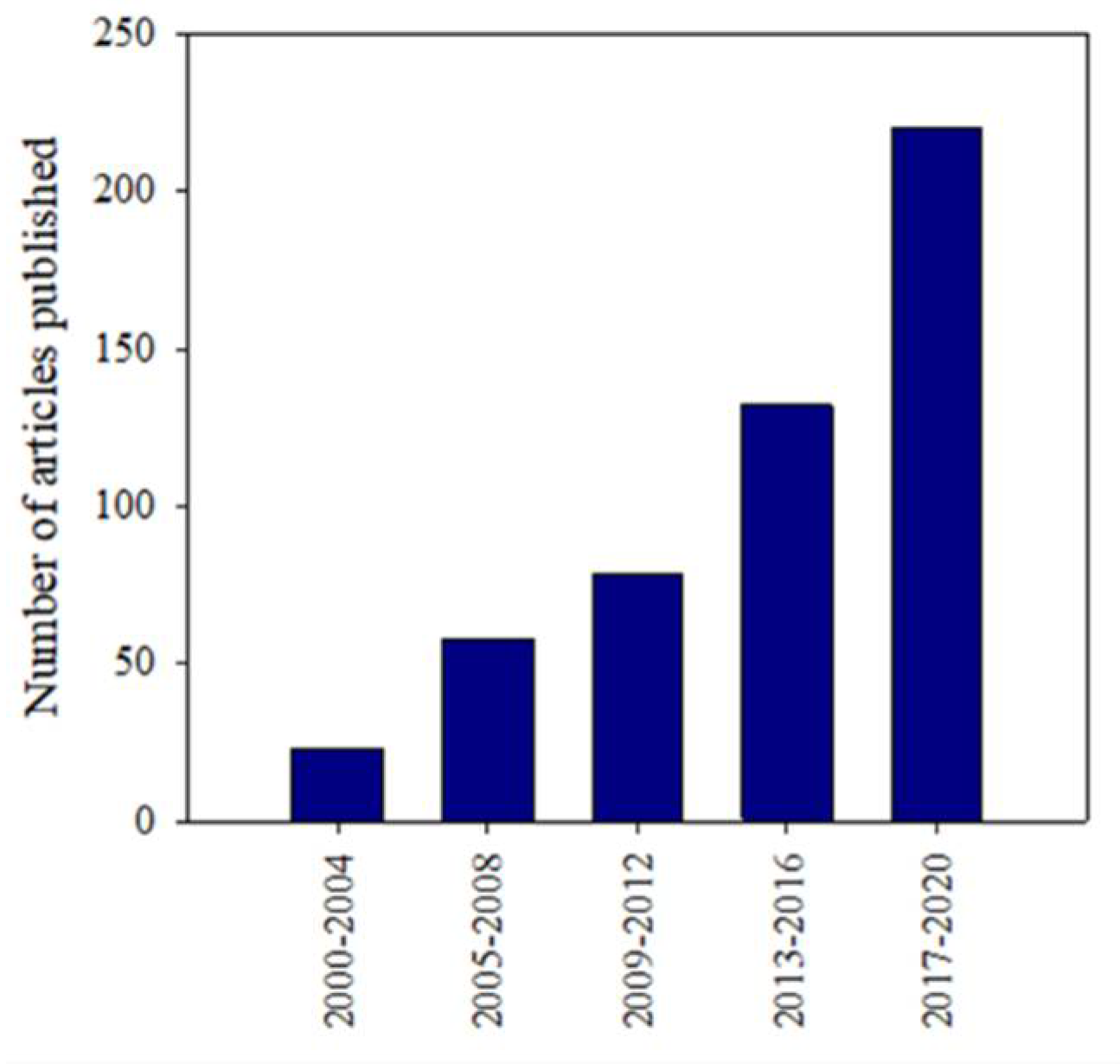
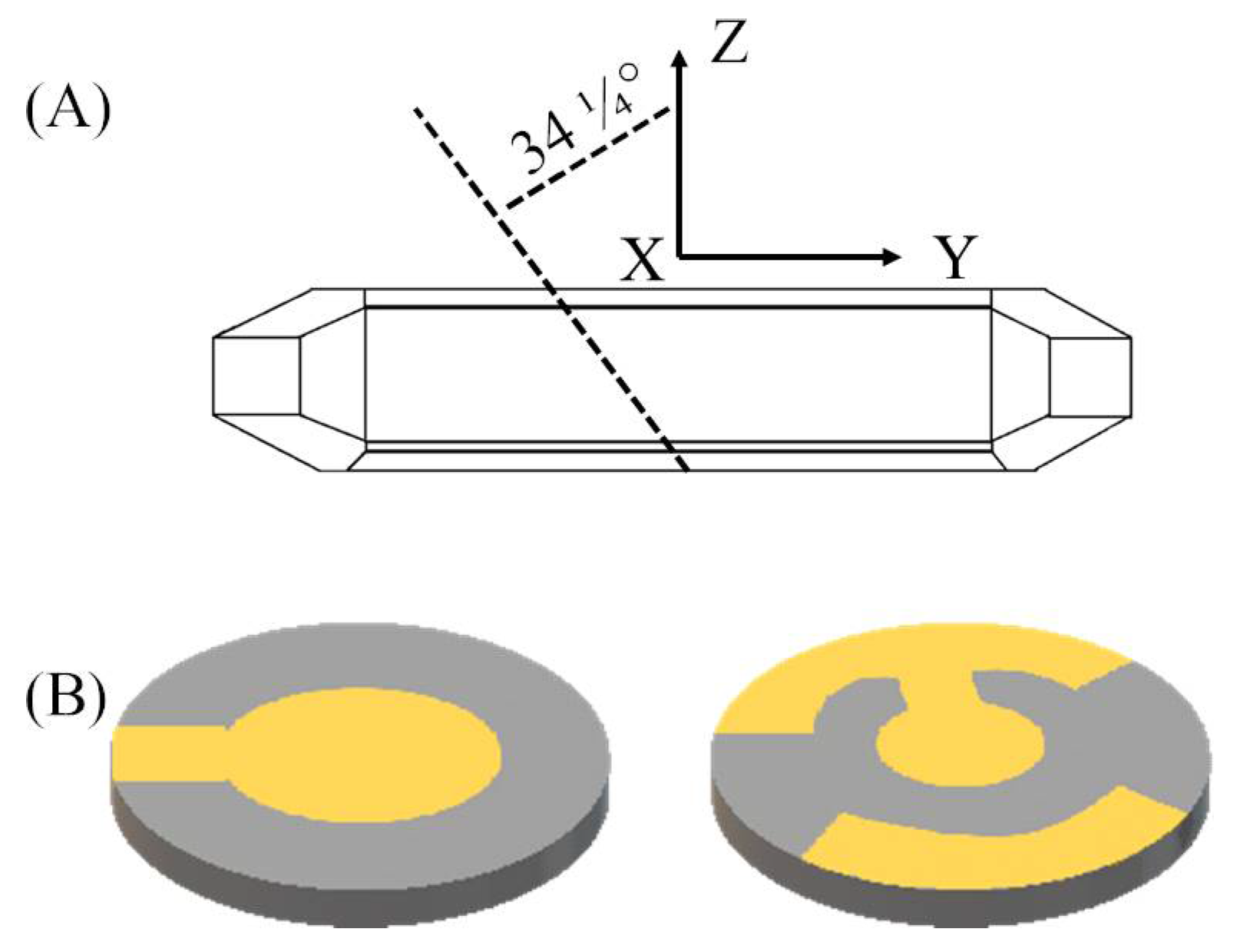
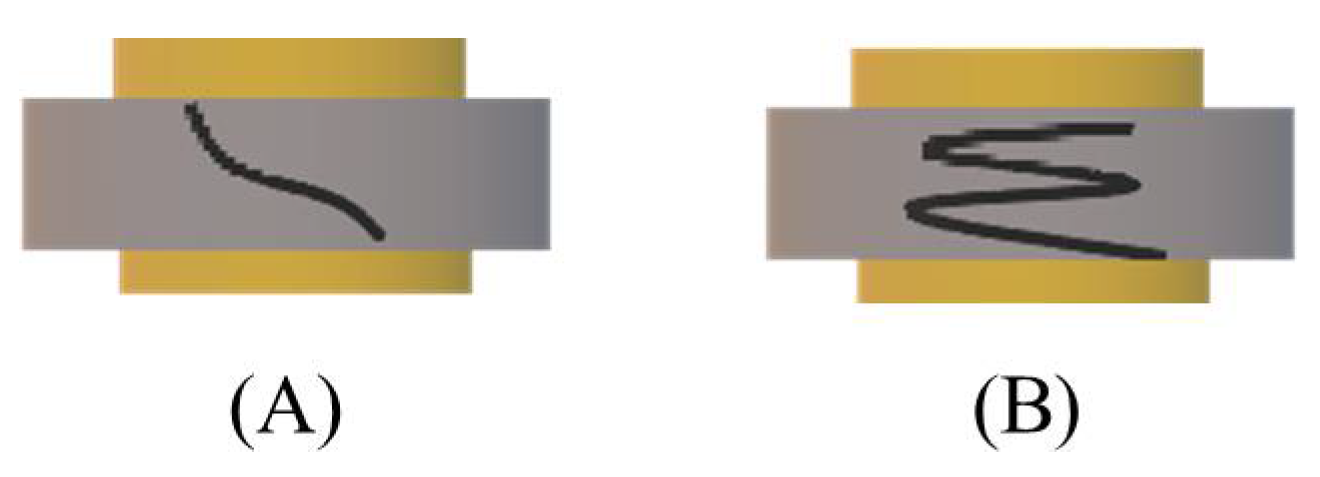
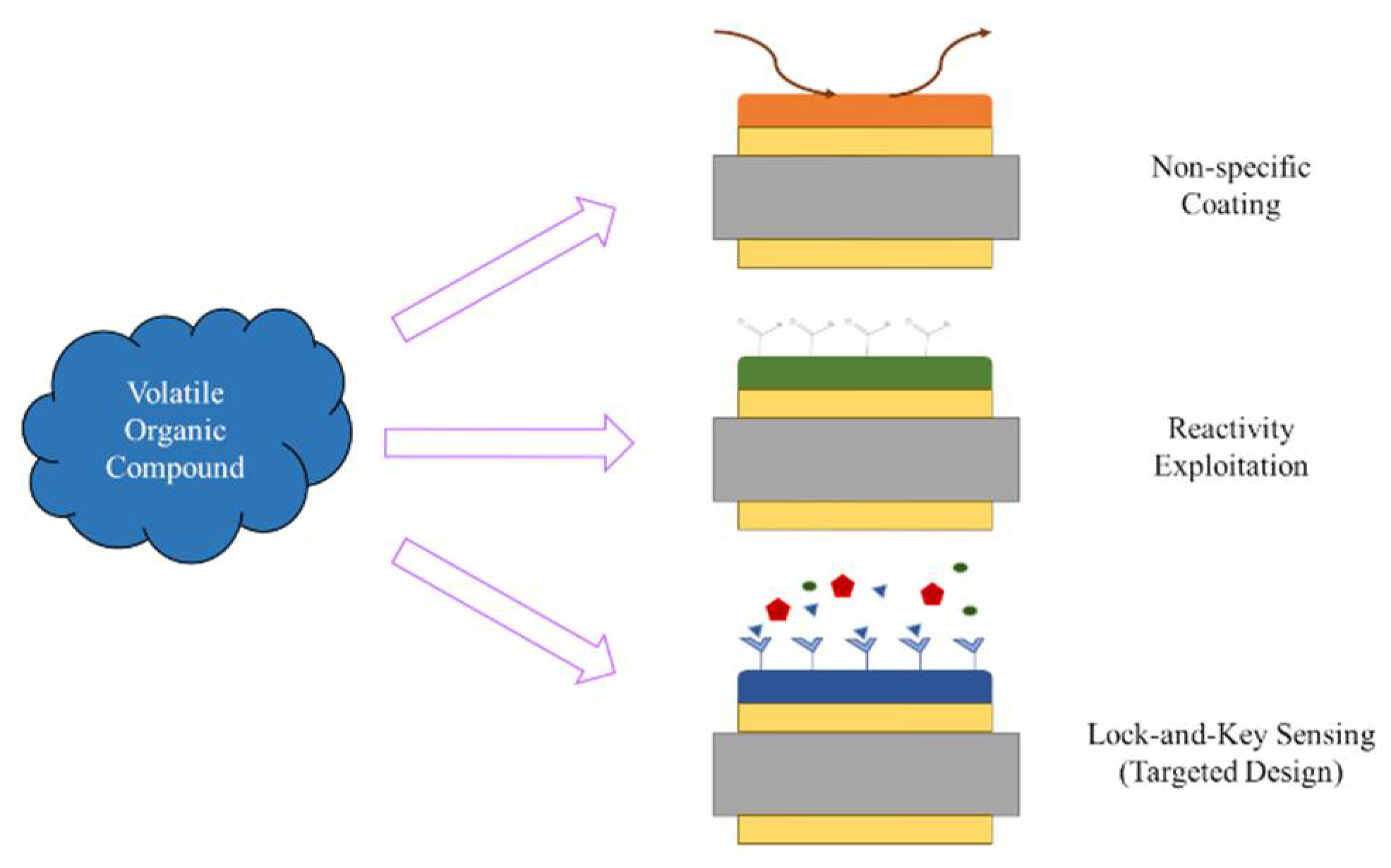
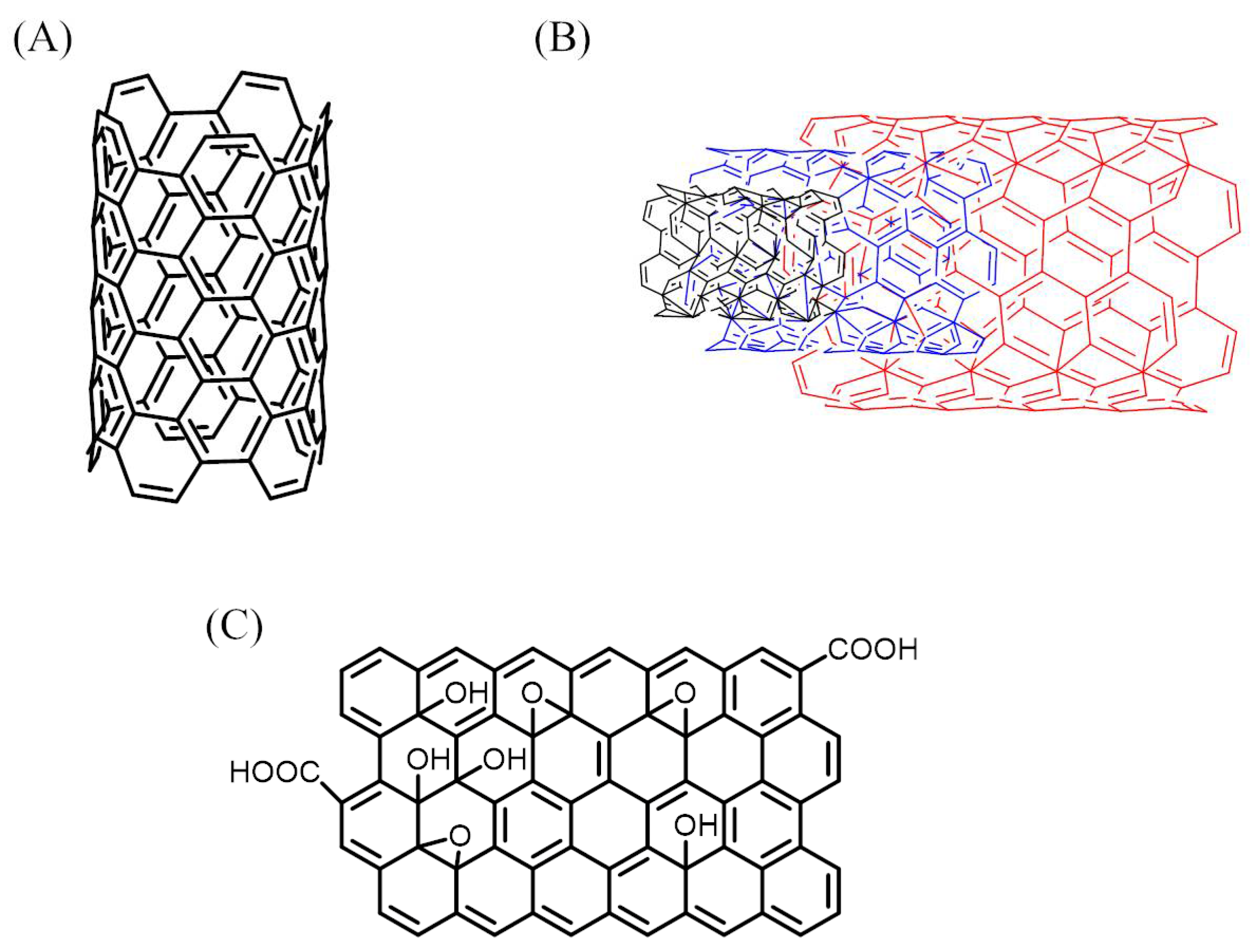


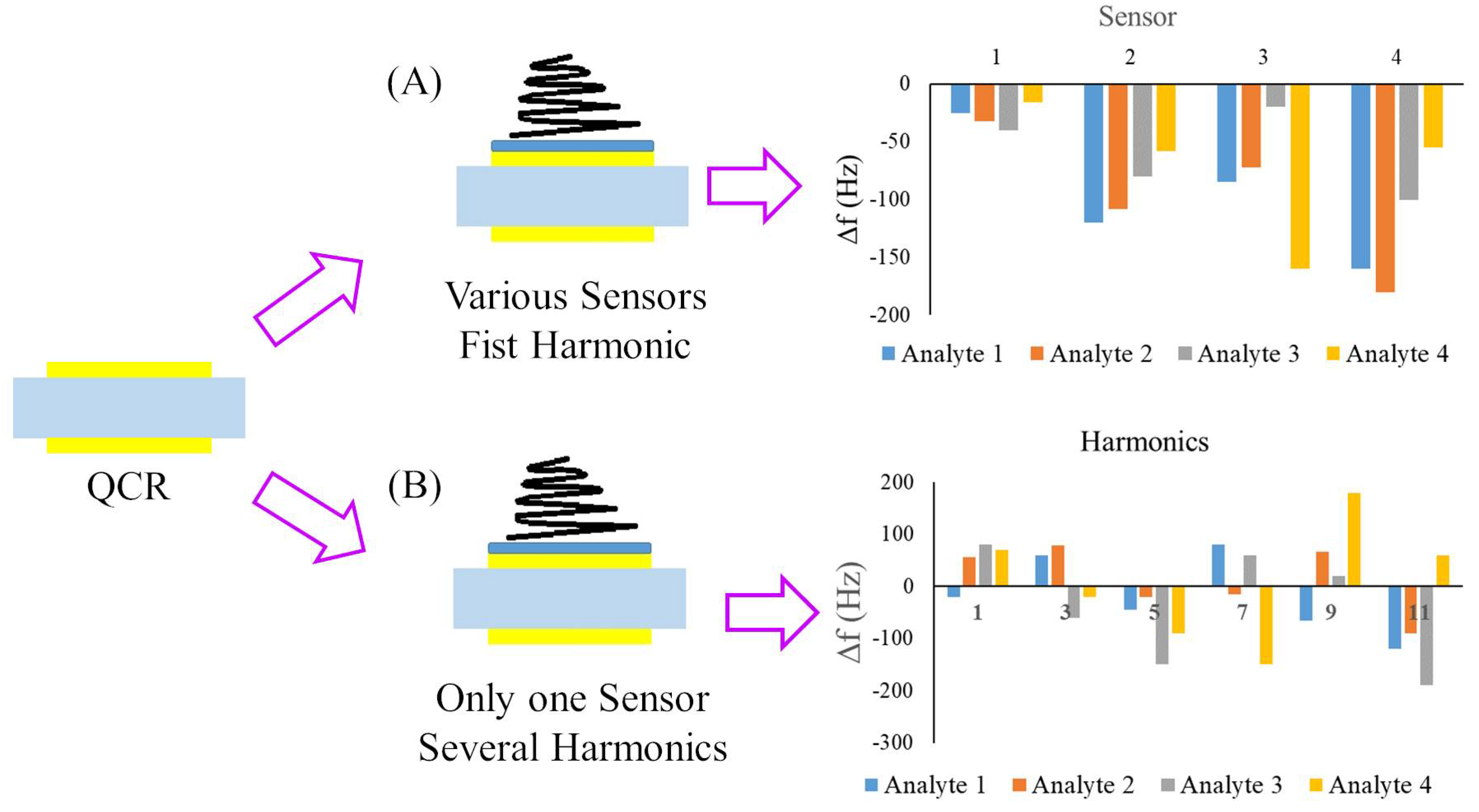
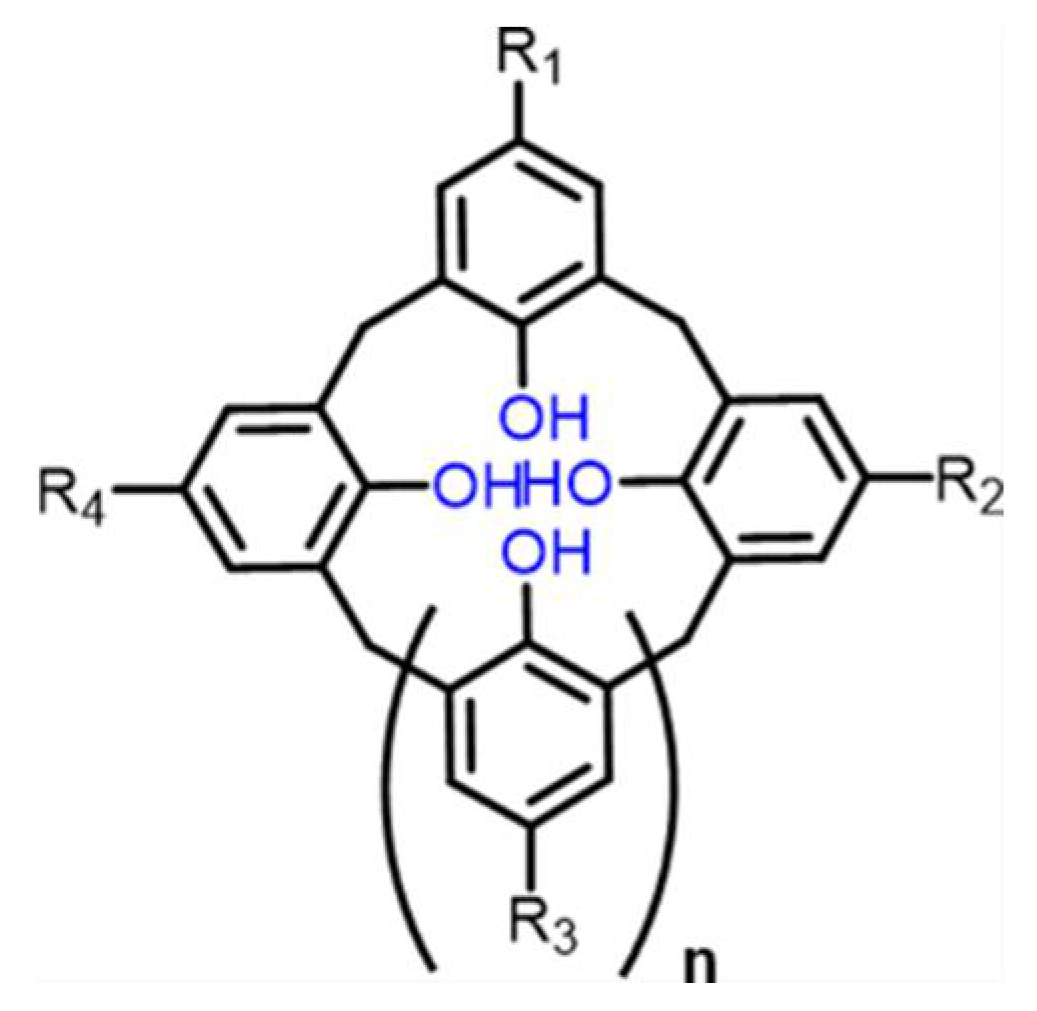
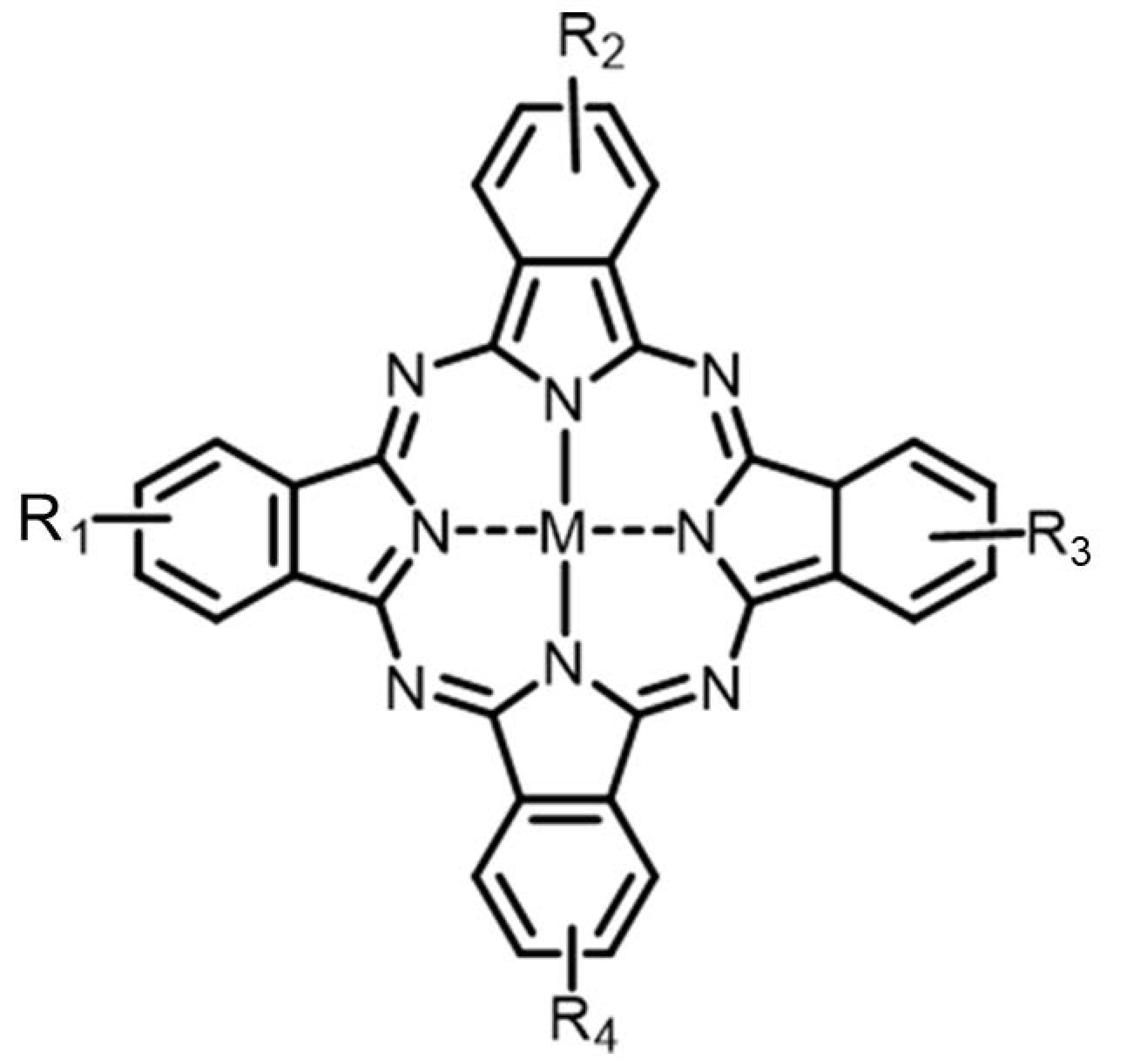
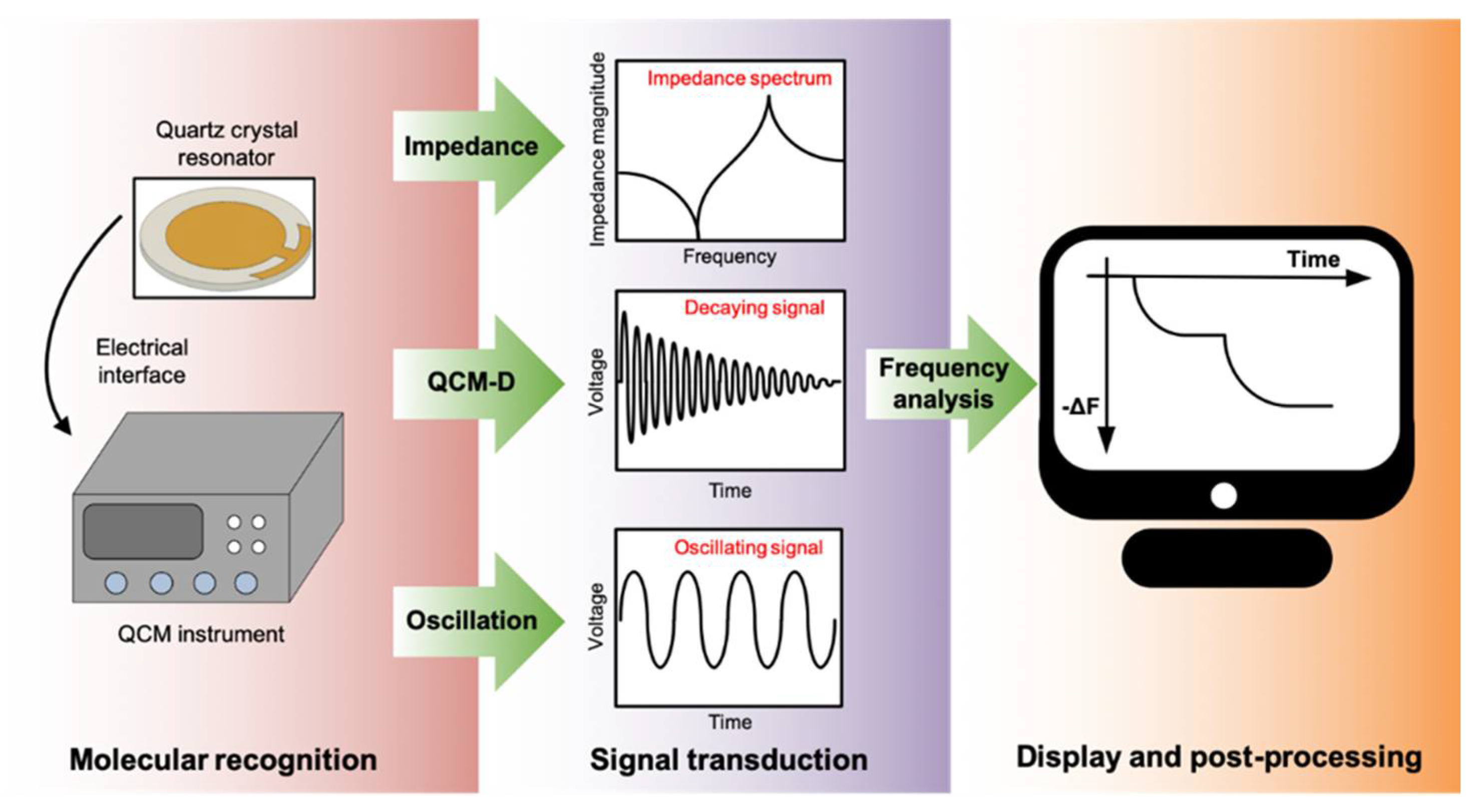
Publisher’s Note: MDPI stays neutral with regard to jurisdictional claims in published maps and institutional affiliations. |
© 2021 by the authors. Licensee MDPI, Basel, Switzerland. This article is an open access article distributed under the terms and conditions of the Creative Commons Attribution (CC BY) license (https://creativecommons.org/licenses/by/4.0/).
Share and Cite
Pérez, R.L.; Ayala, C.E.; Park, J.-Y.; Choi, J.-W.; Warner, I.M. Coating-Based Quartz Crystal Microbalance Detection Methods of Environmentally Relevant Volatile Organic Compounds. Chemosensors 2021, 9, 153. https://doi.org/10.3390/chemosensors9070153
Pérez RL, Ayala CE, Park J-Y, Choi J-W, Warner IM. Coating-Based Quartz Crystal Microbalance Detection Methods of Environmentally Relevant Volatile Organic Compounds. Chemosensors. 2021; 9(7):153. https://doi.org/10.3390/chemosensors9070153
Chicago/Turabian StylePérez, Rocío L., Caitlan E. Ayala, Jong-Yoon Park, Jin-Woo Choi, and Isiah M. Warner. 2021. "Coating-Based Quartz Crystal Microbalance Detection Methods of Environmentally Relevant Volatile Organic Compounds" Chemosensors 9, no. 7: 153. https://doi.org/10.3390/chemosensors9070153
APA StylePérez, R. L., Ayala, C. E., Park, J.-Y., Choi, J.-W., & Warner, I. M. (2021). Coating-Based Quartz Crystal Microbalance Detection Methods of Environmentally Relevant Volatile Organic Compounds. Chemosensors, 9(7), 153. https://doi.org/10.3390/chemosensors9070153






